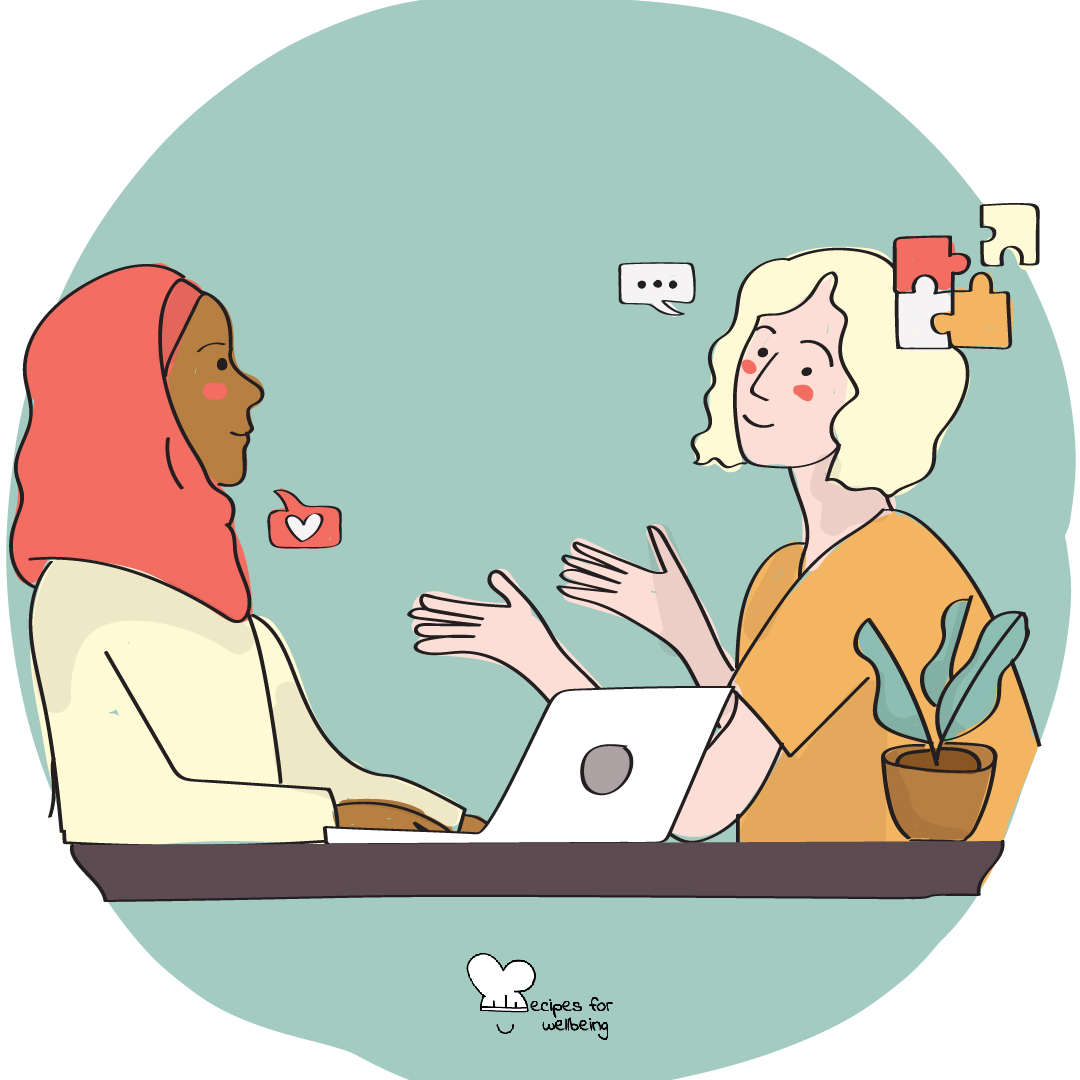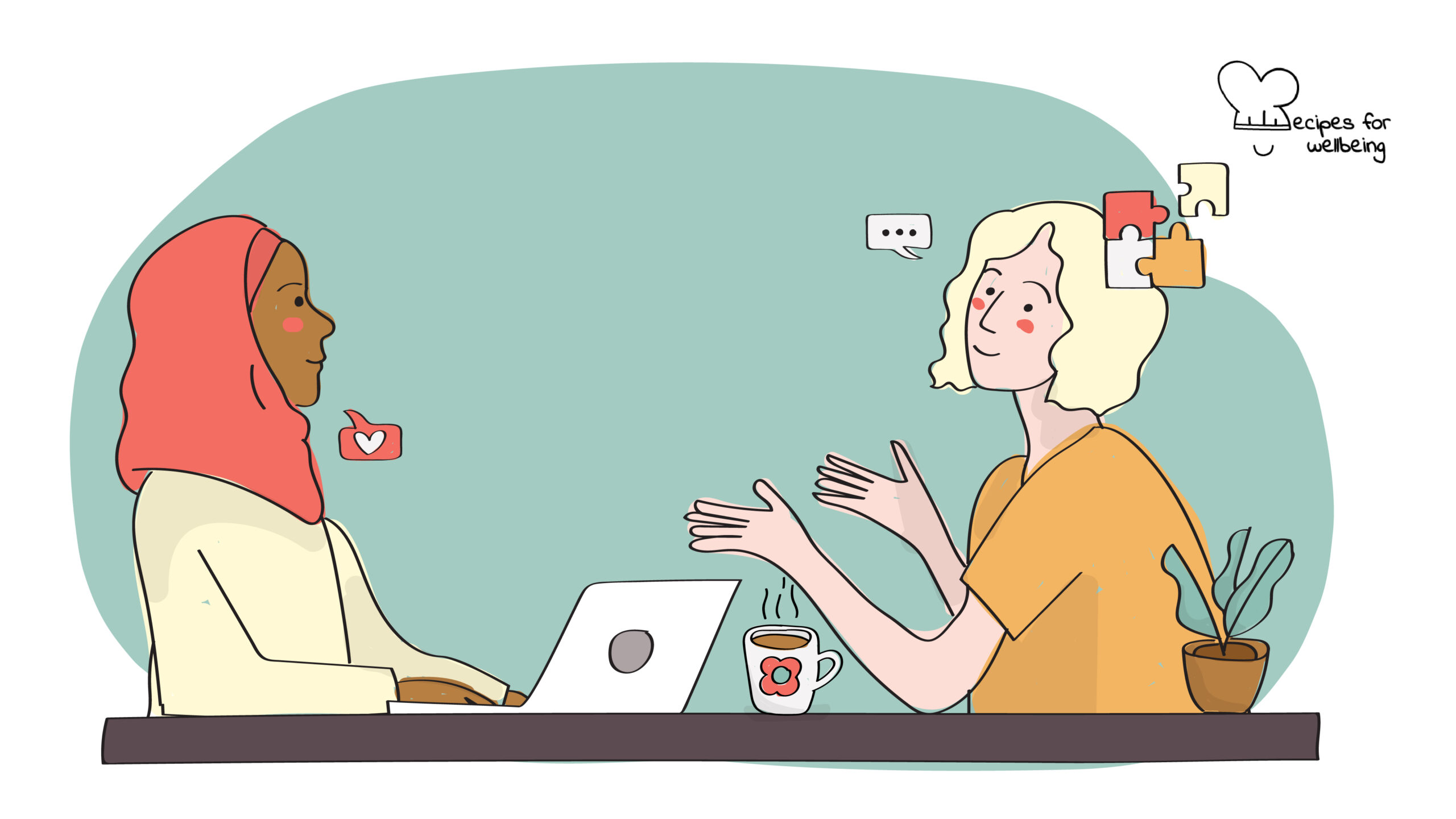
How to be inclusive of autism in recruitment practices
It is not our difference that divides us. It is our inability to recognize, accept and celebrate those differences ―Audre Lorde
👥 Serves: 11-25 people, 2-10 people, 26-40 people, 41+ people
🎚 Difficulty: Medium
⏳ Total time: Half a day
🥣 Ingredients: A sheet of paper (even a sticky note), a pen, a calculator (if maths is not your friend!)
🤓 Wholebeing Domains: Community, Positive Emotion, Radical Care
💪 Wholebeing Skills: Affirmation, Allyship, Diversity, Empathy, Equity, Fairness, Inclusion, Optimism, Respect

How to be inclusive of autism in recruitment practices
📝 Description
Cater for greater diversity and inclusivity in your recruitment.
Autism spectrum disorder (ASD) is a complex developmental condition which involves challenges with social communication, limited interests, and repetitive behaviour. The degree of impairment varies between different people.
Matthew Lerner, a professor of psychology, psychiatry and paediatrics at Stony Brook University reminds us that “if we can better accommodate their (people living with ASD) needs in ways that are easy and low-cost, they can be phenomenal contributors when given the right opportunity.”
Many individuals living with ASD are more than capable of holding a great job – and being a fantastic employer – but it is important organisations are vigilant in providing the right support, right from the start: recruitment.
This recipe has been inspired by Ashlea McKay, an autistic woman who is a UX professional and news writer based in Australia and has been written by our wellbeing content writer collaborator Marissa Del Mistro.
👣 Steps
Step 1 – Consider what skills are listed in the job advertisement (20’)
Does your job advertisements include a long list of mandatory skills and desired attributes?
If yes, it is time to review how these are written, to be more inclusive for people living with ASD. Adults with ASD tend to interpret the criteria literally and may believe they are not suited to your advertised role if they do not meet every single criterion.
Instead, list the “must-have skills” only by including tasks in the ad that the candidate needs to be successful in the role. You can eliminate some skills on the job advertisement by determining if the skills can be developed and learnt over time, or if they are needed from the offset.
It is also important to be very clear about the “must-have” skills. For example, if the role requires “strong communication skills,” include the specific outcomes such as, how does your organisation measure “strong?”, Who would the candidate be communicating with? Do they have to network for the role? Will they be cold calling people or needing to meet clients/service users daily?
Step 2 – Highlight the diversity in your organisation (20’)
Put yourself in the shoes of someone looking for work with ASD – if you are unable to see how the organisation champions diversity, you will likely decide to look elsewhere to an organisation that does.
Diversity should not be a ‘checklist’ exercise for organisations, but celebrated! It is imperative to include how your organisation embraces differences by highlighting the inclusion initiatives you have at your organisation, what benefits are offered, and options for flexible work.
Disability and neurodiversity are not always mentioned on organisations’ websites/job advertisements, so be sure to include this. If this is not something your organisation has considered before – it is time to host a meeting with your management team to discuss inclusive policies and initiatives to change the heart of the organisation.
Step 3 – Unconscious bias training (2 hours)
Humans learn new concepts and ideas every day, starting from childhood, and we form ideas, opinions, and biases about people “different” to us.
Implicit biases exist as one’s “conscious brain” is only able to process around 40 bits of information every second, leaving the “unconscious brain” to filter the remaining information. The “unconscious brain” runs in the background and quickly filters, prioritises, and categorises information, allowing the “conscious brain” to focus on the information it deems most important.
When this conscious/unconscious process is applied to different groups of people, the brain automatically constructs stereotypes. These are influenced by a variety of factors, including the person’s culture, background, and personal experiences.
When these stereotypes are applied to interactions and decisions, it can lead to discrimination. Ableism and discrimination are common.
Therefore you may hold biases about autism and neurodivergence – conscious or subconsciously – and it’s very important to unlearn these biases, including how they may present themselves in the workplace and within the hiring process.
Indeed, it takes a mindful, respectful approach to remove affinity bias. One of the best approaches is offering your team (especially your hiring team!) unconscious bias training. This training strives to help your team to understand and celebrate diversity, come face to face with the unconscious bias they may hold and tangible ways to reduce the likelihood of these impacting the decisions they make. This will allow their logical brain to understand the decisions they are making rather than be influenced by any bias.
There are many additional biases that people hold in addition to neurodivergence bias, including gender, race, LGBTQIAS+, age, religion, appearance, politics, education level, and many more – so you can even do a series of training in addition to a neurodivergence focused training.
The training should be done by an expert outside of the organisation. There are a few “rules” to consider when doing these training sessions:
- Unconscious bias training needs to be a safe, respectful space that can foster conversations – it should not be about blaming or shaming.
- The unconscious bias training should not imply that people are intentionally ableist, ageist, racist, sexist, etc. These biases, by their very nature, are unconscious and unintentional.
- The unconscious bias training should explain that everyone can be both a victim and a perpetrator of bias. Regardless of an employee’s protected characteristics such as race, gender, disability, or age, they may also be the victim of bias based on other characteristics, such as height, weight, and appearance.
Step 4 – Overhaul your interview process (30’)
Traditional job interviews are often very structured, formal, and can be intense! You sit face to face with people judging every answer and for people living with ASD, who may struggle with socialising and communication, this format does not foster a successful environment.
To get the best out of candidates living with ASD and to accurately assess their capabilities for the role, replace the high-pressure one-on-one with the following:
- A mix of skills-based assessments.
- Informal conversations.
- Group activities.
- Telephone interviews, for the first step.
- Provide interview questions in advance.
- Clarify how many people will be attending the interview and their roles.
- Share details such as lighting, temperature, room orientation and design about where the interview will be taking place in the interview room, to reduce anxiety.
- Share details about access to facilities within the building (e.g., toilets, cafes, quiet spaces, and public waiting areas).
- Ask the candidate for any reasonable adjustments they require.

